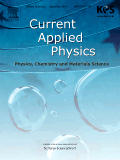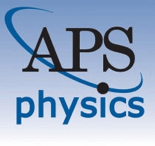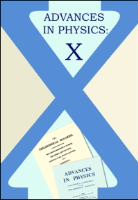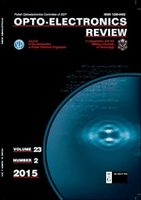
Physical Review Applied
Scope & Guideline
Fostering Collaboration for a Brighter Scientific Future
Introduction
Aims and Scopes
- Quantum Computing and Information:
Research in this area includes studies on qubit design, quantum algorithms, quantum error correction, and quantum communication protocols. - Nanotechnology and Materials Science:
This scope encompasses the study of nanoscale materials, their properties, and applications such as nanocomposites, quantum dots, and 2D materials. - Acoustic and Optical Metamaterials:
Research on the design and application of metamaterials for manipulating sound and light, enabling novel functionalities such as cloaking, superlensing, and enhanced sensing. - Spintronics and Magnetic Devices:
This area focuses on the manipulation of spin degrees of freedom in materials for applications in data storage and quantum devices. - Thermal and Thermoelectric Applications:
Studies on heat management, thermoelectric materials, and their application in energy harvesting and cooling technologies. - Electromagnetic Theory and Applications:
Research that applies electromagnetic principles to develop new technologies, including sensors, antennas, and communication systems.
Trending and Emerging
- Quantum Information Science:
There is a significant increase in research focused on quantum computing, quantum communication, and quantum sensing, driven by advancements in qubit technology and algorithms. - Machine Learning and AI in Physics:
The application of machine learning techniques to solve complex physical problems, optimize devices, and analyze data has become a rapidly growing field. - Hybrid Quantum Systems:
Research on hybrid systems that combine different states of matter, such as superconducting qubits with photonic or magnonic systems, is gaining momentum. - Sustainable and Green Technologies:
Emerging research on materials and devices aimed at energy efficiency, including thermoelectric materials and quantum dots for solar energy applications, reflects a growing interest in sustainability. - Non-Hermitian Physics and Exceptional Points:
The exploration of non-Hermitian systems and exceptional points is trending, particularly for applications in sensing and energy transfer.
Declining or Waning
- Classical Mechanics and Fluid Dynamics:
Research related to classical mechanics and fluid dynamics has become less prominent, likely due to the rise of more interdisciplinary and applied physics topics that integrate advanced materials and quantum mechanics. - Traditional Semiconductor Physics:
While still relevant, traditional semiconductor physics appears to be overshadowed by emerging fields focusing on two-dimensional materials and novel device architectures. - Low-Dimensional Systems without Quantum Effects:
Studies focusing solely on low-dimensional systems without significant quantum mechanical effects have decreased, as more complex phenomena are being explored.
Similar Journals

Frontiers in Physics
Exploring the Frontiers of Physical KnowledgeFrontiers in Physics is a prestigious peer-reviewed journal published by FRONTIERS MEDIA SA, dedicated to advancing the field of physics through innovative research and interdisciplinary approaches. Established as an Open Access journal in 2013, it has quickly become a vital resource for researchers, professionals, and students alike, with a shining presence in Scopus categories such as Biophysics, Materials Science, Mathematical Physics, and Physical Chemistry. With an impressive array of quartile rankings, including Q2 in several key areas, it positions itself firmly among leading journals in the field, reflecting its commitment to high-quality contributions. The journal's global reach and emphasis on collaborative research not only enhance its visibility in the scientific community but also facilitate a deeper understanding of complex physical phenomena. Researchers are encouraged to submit original works that push the boundaries of knowledge, making Frontiers in Physics an essential platform for the latest advancements in the discipline.

CURRENT APPLIED PHYSICS
Unveiling the Latest in Physics and Material Innovations.Current Applied Physics is a leading journal published by Elsevier, specializing in the dynamic fields of Physics and Materials Science. With an ISSN of 1567-1739 and an E-ISSN of 1878-1675, this journal focuses on the latest advancements and applications of physics principles in various practical domains. Operating from the innovative hub of Amsterdam, Netherlands, Current Applied Physics occupies a significant niche in the scientific community, evidenced by its Q2 ranking in both the Physics and Astronomy and Materials Science categories for the year 2023, along with impressive Scopus rankings that highlight its relevance in the fields of General Physics and General Materials Science. The journal's scope encompasses a wide range of topics, fostering interdisciplinary collaboration and facilitating the exchange of knowledge among researchers, professionals, and students. Each issue features peer-reviewed articles that contribute to the understanding and application of physical sciences, making it an essential resource for those aiming to stay at the forefront of research and innovation in applied physics.

PHYSICAL REVIEW A
Advancing Knowledge in Optics and PhotonicsPHYSICAL REVIEW A, published by the American Physical Society, is a leading journal in the field of Atomic and Molecular Physics and Optics, boasting a Q1 category ranking in its area for 2023. With an ISSN of 2469-9926 and an E-ISSN of 2469-9934, this journal plays a pivotal role in disseminating high-quality research findings, theories, and methodologies that shape current understanding and advancements in the discipline. Although not an open-access journal, it remains highly accessible to professionals and academia through institutional subscriptions. The journal's impactful contributions are evident from its Scopus rank of #70 out of 224 in the field, placing it in the 68th percentile for scholarly impact. As a hub of innovative research and a vital resource for both students and seasoned researchers alike, PHYSICAL REVIEW A remains essential for those seeking to stay abreast of breakthroughs in atomic and molecular studies, as well as optics and photonics.

Advances in Physics-X
Fostering Innovation in Physics and AstronomyAdvances in Physics-X is a premier open-access journal published by Taylor & Francis Ltd, dedicated to advancing the frontiers of knowledge in the field of Physics and Astronomy. Since its inception in 2016, the journal has established itself as a vital platform for researchers and professionals, showcasing innovative research and cutting-edge theories that influence a broad array of sub-disciplines within physics. With an impressive impact factor and ranked in the 94th percentile among its peers, it resides in the Q1 category for Physics and Astronomy (miscellaneous), indicating its significant contributions to the academic community. Located in the United Kingdom, the journal encourages open access to foster wider dissemination and visibility of scholarly works, aligning with contemporary academic trends that prioritize global knowledge sharing. The ongoing commitment to publishing high-quality research ensures that Advances in Physics-X remains an essential resource for students, industry experts, and academics alike, helping to shape the future of physics research through collaboration and innovation.

PRX Quantum
Bridging disciplines through quantum exploration.PRX Quantum is a premier open-access journal published by the American Physical Society, dedicated to advancing the field of quantum studies. Launched in 2020, this journal serves as a vital platform for the dissemination of high-quality research across a diverse range of interconnected disciplines, including applied mathematics, computer science, and electronic engineering, as evidenced by its impressive rankings in the 2023 Scopus categories. With a remarkable impact factor and holding a top quartile position in multiple areas, PRX Quantum is not only pivotal for researchers engaged in quantum physics and related areas but also for professionals and students seeking to stay at the forefront of quantum technology and material science. Additionally, as an open-access journal, it champions the free distribution of knowledge, allowing for wider accessibility and engagement within the global research community. With a commitment to nurturing innovation and interdisciplinary collaboration, PRX Quantum is an indispensable resource for anyone interested in the evolving landscape of quantum science.

Quantum
Advancing the frontiers of quantum science.Quantum, an esteemed Open Access journal published by the Verein Förderung Open Access Publizierens Quantenwissenschaft, serves as a pivotal platform for the dissemination of groundbreaking research in the fields of atomic and molecular physics, and optics. Since its inception in 2017, Quantum has emerged as a leader in the academic community, boasting an impressive impact factor within the top quartile (Q1) in its categories, ranking #6 out of 81 in Physics and Astronomy (miscellaneous) and #35 out of 224 in Atomic and Molecular Physics, and Optics in 2023. With its global reach, based in Vienna, Austria, Quantum is dedicated to promoting innovative research and fostering collaboration among scientists, researchers, and students alike. The journal encourages unrestricted access to high-quality publications, ensuring that vital advancements in quantum science are available to all, thereby facilitating knowledge exchange and accelerating scientific progress. Explore the cutting-edge developments at the forefront of quantum studies and contribute to a vibrant scholarly community.

Science China-Physics Mechanics & Astronomy
Illuminating the Path to Scientific DiscoveryScience China-Physics Mechanics & Astronomy, published by SCIENCE PRESS, stands as a prestigious journal within the Physics and Astronomy domain, particularly recognized for its contributions to the understanding of fundamental and applied physics. With an exhilarating Q1 ranking in the 2023 category and earning a remarkable scopus rank of #21 out of 243, the journal demonstrates its significant impact, being positioned in the 91st percentile of its field. Operating under an Open Access model, it facilitates the broad dissemination of high-quality research, ensuring accessibility for researchers, professionals, and students worldwide. Its scope covers a variety of essential topics in physics and astronomy, promoting a comprehensive understanding of the latest advancements from 2010 through 2024. The journal is a vital resource for anyone aiming to stay at the forefront of research in these dynamic fields, with its prominent address located in Beijing, China, symbolizing its global influence.

PHYSICAL REVIEW LETTERS
Showcasing Transformative Research in Real-TimePhysical Review Letters, published by the American Physical Society, is a premier journal in the field of Physics and Astronomy renowned for its rapid dissemination of high-impact research findings. With a distinguished history dating back to 1958 and an impressive ranking of #13 out of 243 in the general physics category, it stands proudly within the Q1 quartile, placing it in the top 6% of journals in its field. The journal focuses on brief reports of significant fundamental research across all areas of physics, making it an essential resource for researchers, professionals, and students seeking to stay at the forefront of developments in their field. Although Physical Review Letters does not offer open access options, its rigorous peer-review process ensures a high standard of quality and relevance in its published articles. With an unwavering commitment to advancing the understanding of physical science, this journal is indispensable for those looking to make a genuine impact in their research endeavors.

OPTO-ELECTRONICS REVIEW
Advancing Knowledge at the Intersection of Light and TechnologyOPTO-ELECTRONICS REVIEW, published by the Polish Academy of Sciences, is a prestigious peer-reviewed journal that has been at the forefront of research in the fields of electrical and electronic engineering, materials science, and radiation since its inception in 1996. With an ISSN of 1230-3402 and an E-ISSN of 1896-3757, the journal serves as a vital platform for disseminating high-quality research that explores the intersection of optoelectronics with cutting-edge technological advancements. Operating from its headquarters in Warsaw, Poland, OPTO-ELECTRONICS REVIEW reaches an international audience, contributing significantly to the body of knowledge in its categorically ranked quartiles, specifically Q3 in Electrical and Electronic Engineering and Materials Science for 2023. Researchers will find valuable insights as the journal continues to embrace emerging trends while maintaining rigorous academic standards. Although currently not open access, the journal remains an essential resource for professionals and students seeking to enhance their understanding and application of optoelectronic technologies.

Physical Review Research
Empowering researchers with unrestricted access to knowledge.Physical Review Research, published by the American Physical Society, is a premier open access journal dedicated to the dissemination of high-quality research across all areas of physics and astronomy. Since its inception in 2019, this journal has quickly established itself as a vital platform for researchers, achieving a prestigious Q1 ranking in the dynamics of Physics and Astronomy (miscellaneous) and holding a commendable position in the Scopus Rankings with a rank of #29 out of 243, placing it in the 88th percentile. With the commitment to fostering scientific collaboration and transparency, Physical Review Research offers unrestricted access to valuable findings, enabling researchers, professionals, and students alike to engage with cutting-edge contributions in general physics and astronomy. As it converges into its forthcoming years of publication, the journal remains dedicated to showcasing rigorous research and innovative ideas that drive the field forward.